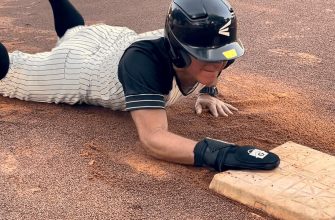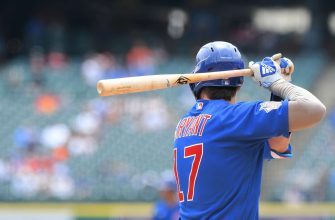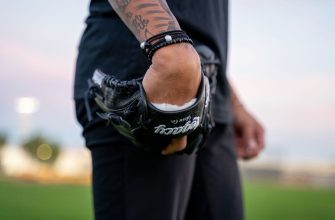Baseball field lighting has been around for decades, allowing games to be played at night and extending usage of fields. Several factors impact the cost of installing and operating lights for a baseball field, including the type of fixtures, number of poles, pole height, controls, and maintenance. Generally, a new LED lighting system for a high school baseball field can range from $100,000 to $250,000, while a small league field may cost $50,000 to $150,000. The most expensive part is the upfront installation, but maintenance and operation expenses add up over time. This article will explore the different elements that determine overall baseball field lighting costs.
Types of Lighting
The two main types of lighting used for baseball fields are metal halide and LED lights. Metal halide lights have traditionally been used, but LED lighting is becoming more popular due to its lower energy use, longer lifespan, and improved light control.
Metal halide lights typically range from 400-1500 watts, while LED lights for baseball fields are commonly 1500 watts. The brightness and intensity of the lighting is important to properly illuminate the field and stands for night games. Recommended light levels for baseball fields are 50 footcandles for infield and 30 footcandles for outfield.
Glare control and minimizing spill light is also an important consideration for baseball field lighting. LEDs allow for better optical control and placement of light compared to older metal halide systems. Using visors, louvers and external shields can help reduce glare from the stands and surrounding areas. Controlling uplight and light spill is important for being a good neighbor and not causing light pollution.
Lighting Design
When designing the lighting for a baseball field, there are several key factors to consider:
-
The lighting design should aim to achieve uniform illumination across the entire field. This ensures fair play by eliminating dark spots or shadows. The recommended uniformity ratio is 2:1 for the infield and 2.5:1 for the outfield.
-
Lighting standards vary based on the level of play. Little league fields require 50 footcandles in the infield and 30 footcandles in the outfield. High school fields need 70 footcandles in the infield and 50 in the outfield.
-
Proper lighting calculations are critical in determining the number, height, and placement of light poles. Factors like pole height, light source, and optics all impact the lighting distribution. A qualified lighting designer should perform these calculations to ensure compliance with standards.
-
Glare control is also an important consideration, both for players and spectators. Appropriate fixture aiming helps minimize glare. Using visors, shields, or louvers on luminaires can further reduce glare and increase visual comfort.
The lighting design directly impacts playability, safety, and the overall baseball field experience for athletes and fans. Following recognized standards through careful planning and calculations is key.
Number of Poles

The number of light poles needed for a baseball field can vary based on the size of the field and lighting requirements. According to the source, a typical Little League baseball field may only require 4 poles, while a high school field usually needs 6-8 poles, and a college or professional field could require up to 16 poles.
The number of poles directly impacts the cost of the lighting system. Each additional pole requires expenses for the concrete base, wiring, pole itself and light fixtures. Most experts recommend using taller poles spaced further apart to minimize costs instead of many short poles clustered together. For example, this lighting company explains that 4 poles at 80 feet high can effectively light a baseball field, while 10 poles at 60 feet would provide similar lighting but cost significantly more. In general, utilizing fewer but taller poles leads to the most cost-effective baseball field lighting design.
Pole Height
The height of lighting poles is one of the main factors that impacts cost for a baseball field lighting project. Standard pole heights for baseball field lighting typically range from 60 to 120 feet. The required pole height depends on the level of play. For example, high school and little league fields generally use shorter poles around 60-80 feet tall. College, professional, and tournament quality fields require taller poles, ranging from 90 to 120 feet. Taller poles can spread light over a wider area of the field and provide better uniformity.
But they also come at a higher cost. The pole height must be sufficient to get the proper lighting above and around obstructions like bleachers or dugouts. In general, higher poles that provide optimal lighting coverage over the entire field will be more expensive. But investing in adequate pole height helps ensure proper visibility for play and reduces shadows. The lighting pole system represents a major portion of the total project cost, so planning pole layout and height is critical for budgeting.
Lighting Controls
When designing a baseball field lighting system, one key decision is whether to use manual or automated lighting controls. Manual controls involve switches that must be manually turned on and off. Automated controls use timers, photocells, and other methods to automatically turn the lights on at dusk and off at a set time.
Automated lighting controls cost more upfront, but can save on energy costs over time. Automated controls can reduce energy use by 25-80% compared to manual switches. Key options for automated controls include astronomical time clocks, photocells, and web-based control systems.
Time clocks allow lights to be programmed on a set schedule and can factor in seasonal changes in daylight. Photocells turn lights on when natural light dims to a preset level. Web-based controls allow remote monitoring and adjustment of the lighting system via computer or mobile device. These advanced controls start around $2500-$3500.
Overall, automated lighting controls require extra investment upfront, but can pay off over time through energy savings, convenience, and precise control over the lighting system. Baseball field owners should weigh these benefits vs the lower cost of basic manual switches when deciding on a control system. Advanced controls provide optimization and oversight that can extend system life and reduce long-term costs.
Additional Equipment
In addition to the LED light fixtures themselves, there are other equipment costs to factor in for a complete baseball field lighting system.
-
Ballast, wiring, conduit – The electrical components like ballasts, wiring, and conduit to connect the lights can add $15,000-$30,000 to the overall expenses. The specific amount depends on the scale of the lighting system and electrical infrastructure required.
-
Installation costs – Professional installation of the lighting system often runs $15,000-$25,000 depending on system size and complexity of the install. Certified electricians are needed to safely and properly mount the lighting equipment.
-
Structural support – Light poles and associated structural supports like concrete bases can cost $20,000 or more. Taller poles over 60 ft may require more robust foundations and supports. Engineering is needed to ensure structural integrity.
Properly accounting for these additional equipment needs is important when budgeting for a new LED lighting system for a baseball field. Though the LED fixtures themselves are the biggest line item, the other electrical, structural, and installation costs can add 50% or more to the total project costs.
Maintenance Costs

Maintenance is an important factor when considering the total cost of ownership for baseball field lighting. Proper maintenance helps ensure lighting equipment operates efficiently and safely for many years.
Bulb Replacement
Metal halide and high pressure sodium bulbs in traditional lighting systems need to be replaced frequently, sometimes as often as every 1-2 years. Newer LED technology can last 50,000-100,000 hours before needing replacement, equating to 10+ years of typical use. Frequent bulb replacement in old systems leads to higher maintenance costs over time.
Cleaning and Inspections
Light fixtures exposed to weather require periodic cleaning of lenses to maintain optimal light output. Equipment should also be inspected regularly for damage, corrosion, loose wires and other issues that could impact safety or performance. Trained technicians are needed to safely access and service tall field lighting poles and luminaires.
Equipment Repairs
Failing electrical components, wiring problems, storm damage and accidents can lead to equipment repairs. Having spare parts, surge protection and lightning arrestors helps minimize downtime. Proactive maintenance and repair of poles, crossarms, luminaires and electrical systems reduces costly emergency repairs from equipment failures.
Case Studies
Major League Baseball stadiums have some of the most high-tech and expensive lighting systems. According to the source, the cost to install LED lighting at Marlins Park in Miami was $1.5 million. The project involved replacing 584 metal halide fixtures with 288 LED fixtures and controls.
Specific costs included:
- $350,000 for lighting equipment
- $500,000 for structural upgrades
- $150,000 for electrical upgrades
- $500,000 for installation
The Chicago Cubs’ Wrigley Field also underwent a major lighting upgrade in 2020. As reported, the project costing $8-10 million included:
- Removing the previous lights and structures ($2 million)
- Installing new poles and fixtures ($4 million)
- Upgrading electrical systems ($2 million)
For local community baseball fields, costs are much lower but still substantial. One case study for upgrading four fields with LED lighting cites costs of:
- $95,000 for new LED fixtures
- $155,000 for concrete bases and galvanized steel poles
- $60,000 for installation
- $15,000 for electrical upgrades
This comes out to approximately $80,000 per field for a basic LED lighting system. Maintenance is estimated at $2,500 annually per field.
Conclusion
Installing field lighting for a baseball field is a significant investment that can vary widely in cost depending on many factors. The three main components that drive cost are the type of lighting system, the structural and installation costs, and ongoing maintenance expenses.
When it comes to the type of lighting system, LED fixtures are the recommended choice for most teams today because of their energy efficiency, long lifespan, and improved lighting quality compared to older HID systems. Though more expensive upfront, LED systems have lower operating costs over their lifespan. The specific number of light poles, their height and placement, and lighting controls can also impact installation costs. More poles spaced closer together will provide better, more even lighting but cost more in materials and labor.
In terms of overall installation costs, labor is often more significant than materials. Structural costs like concrete bases for poles and installation costs such as electrical connections and wiring quickly add up. While DIY installations are possible for lower-budget teams, professional installation ensures proper standards are met, code compliance, safe electrical systems, and optimized lighting placement – usually at a cost of $10,000 or more depending on the size of the field.
Lastly, ongoing maintenance is required to keep the lighting system operating properly, clean, and aimed correctly. Plan for periodic costs for inspections, bulb replacements, cleaning, adjustments, repairs and the like. Well-designed LED systems can minimize but not eliminate these expenses.
All said, a basic four-pole lighting system for a small baseball field typically starts around $15,000 to $25,000. Mid-size and larger fields with more robust lighting needs and equipment can range from $50,000 up to $100,000 or more. Every field has unique needs, so work with qualified designers and contractors to determine the right solution for your budget.








